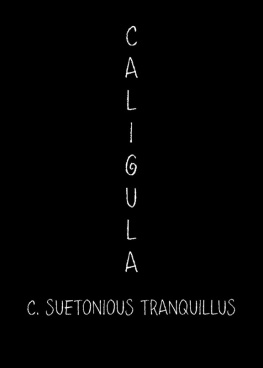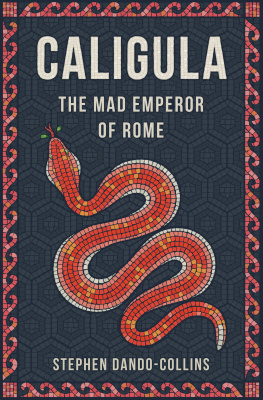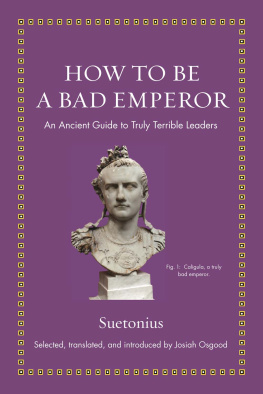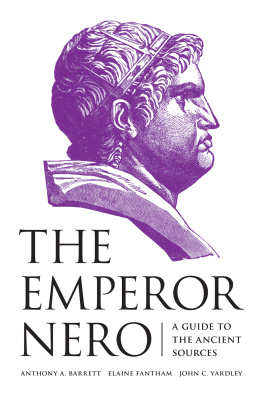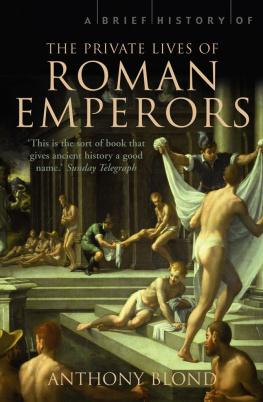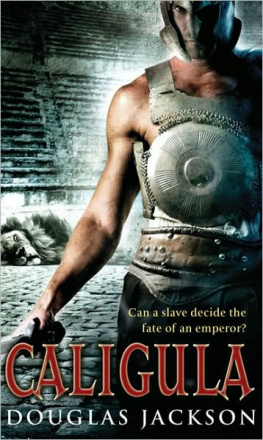
Great Clarendon Street, Oxford, OX2 6DP, United Kingdom
Oxford University Press is a department of the University of Oxford. It furthers the Universitys objective of excellence in research, scholarship, and education by publishing worldwide. Oxford is a registered trade mark of Oxford University Press in the UK and in certain other countries
Anthony A. Barrett and J. C. Yardley 2023
The moral rights of the authors have been asserted
All rights reserved. No part of this publication may be reproduced, stored in a retrieval system, or transmitted, in any form or by any means, without the prior permission in writing of Oxford University Press, or as expressly permitted by law, by licence or under terms agreed with the appropriate reprographics rights organization. Enquiries concerning reproduction outside the scope of the above should be sent to the Rights Department, Oxford University Press, at the address above
You must not circulate this work in any other form and you must impose this same condition on any acquirer
Published in the United States of America by Oxford University Press
198 Madison Avenue, New York, NY 10016, United States of America
British Library Cataloguing in Publication Data
Data available
Library of Congress Control Number: 2022948820
ISBN 9780198854562 (hbk.)
ISBN 9780198854579 (pbk.)
ebook ISBN 9780192596765
DOI: 10.1093/oso/9780198854562.001.0001
Printed and bound by CPI Group (UK) Ltd, Croydon, CR0 4YY
Links to third party websites are provided by Oxford in good faith and for information only. Oxford disclaims any responsibility for the materials contained in any third party website referenced in this work.
Preface
This is in some ways a rather unconventional book. But that is probably as it should beit is, after all, a book about an unconventional character. The Roman emperor Gaius Caesar, more recognizable by his childhood nickname, Caligula, provoked fear and despair during his own lifetime, some two thousand years ago, and in his own special way he still does, although admittedly it is now only academic historians who are made to suffer. Their grief arises from the inescapable recognition that Caligula represents an insoluble paradox. There can surely be few historical figures who have made such a powerful impact on the popular imagination. He has long been a hot topic in films and TV, where an unwritten rule guarantees that his depiction will be exaggerated to the point of absurdity, ranging from his demented antics in the notorious Penthouse Caligula (1979) to our personal favourite, the less well-known but wonderfully weird Italian-French co-production Caligule et Messalina (1981), which offers only minimal hints of historical reality. Even the BBCs distinguished and broadly authentic series I Claudius (1976) relaxed for the portrayal of this particular emperor, with its particularly gruesome scene of Caligula disembowelling his sister/mistress Drusilla, for which there is not a shred of ancient evidence.
Academics may feel that they rise above such tawdry entertainments in their noble mission of reconstructing some semblance of narrative truth from the ancient evidence. But this is where Caligula is so frustratingly paradoxical. The source material available for this quest for the truth is plentiful, even lavish, by the standards of antiquity. The problem lies not so much in the quantity of evidence available, but in its quality. The historian Tacitus, the most reliable ancient chronicler of this period, did write an account of Caligulas brief reign as part of his celebrated Annals, but, frustratingly, the relevant sections are lost without trace. To fill the gap we are obliged to draw on the colourful Life of Caligula of Suetonius, a writer quite incapable of resisting an entertaining anecdote. Along with Suetonius we can draw upon the almost complete account of the much later Greek historian Cassius Dio, unfortunately also a lover of anecdotes (although, sadly, not nearly so entertaining, at least not the way Dio tells them), and exhibiting far less critical analysis than we would expect of todays historians. We can supplement these two with various strands of information derived from other, generally no more reliable, ancient literary sources. As a consequence we end up with a rich abundance of information, and a disheartening scarcity of knowledge. That is the Caligulan paradox.
The broad outline of Caligulas imperial career is in fact very straightforward. He came to power in early ad 37 in a wave of enthusiasm, by 39 things had gone seriously wrong, by early 41 he had been assassinated. That much can be agreed. But within that general framework there is hardly a detail that the modern historian can present without deep reservations about its reliability. What then is that historian to do? In recent years we have seen a string of biographies of Caligula. These certainly have their place, but they do risk creating what is in essence an illusion, that a biography of Caligula, in the regular modern sense of the word, is possible. The true Caligulan biography is in fact a quintessential mares nestthe most we can hope from them is a summary personal interpretation by an individual historian of a mass of incoherent and often inconsistent material. There might be a case to be made for going to the opposite extreme and for directing anyone seriously interested in the topic straight to the raw material of the ancient sources. That to some extent is one of the objectives of this book. We provide over three hundred translated passages of ancient text, taken mainly from literary sources, and also from coins and inscriptions. References to the catalogue of these sources are made using the simple format of, e.g., 1.1 for , Passage 1, and so on. But perusing this raw material works only at a limited level. The information that has survived is often inconsistent or downright contradictory, and navigating it calls for a fairly mature understanding of the period. For better or for worse, readers do need guidance, or at the very least some reassurance that the seemingly impenetrable character of whatever truth is lurking beneath the tangle of confusing testimonies reflects the nature of the beast and not any intellectual shortcomings on the part of the reader. Hence we accompany our translations with relatively extensive introductions and/or notes, to place the events and institutions in their historical contexts, or sometimes simply to provide what we hope will be interesting secondary observations. Any guidance that we provide on these matters is of course bound to be infected by our own viewsit simply cannot be otherwisebut at least those potentially tainted observations are throughout subservient to the sources themselves.
There is in fact a bright side to all of this. While Caligula perhaps does not lend himself well to a biographical approach, he is, on the other hand, the perfect tool to assist students of history in practising their trade (we use the word student here in the broadest sense). Perhaps better than any other historical figure Caligula constitutes a sort of historical laboratory where the student is confronted by a mass of contradictory, inconsistent, and at times nonsensical data. He obliges us to confront head on the stark reality that what we read in our sources is not necessarily the truth and that it is consequently a massive challenge to use this jumble of material to reconstruct and understand the pastparticularly the ancient past, but the principles can be applied to almost any period of history. Arguably better than any other historical figure Caligula brings home the degree to which the monuments of our understanding of history are built on often unstable foundations.



